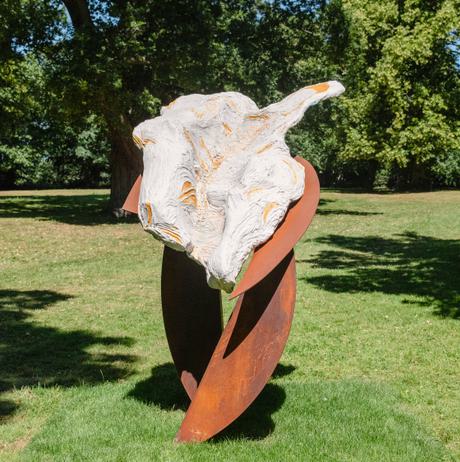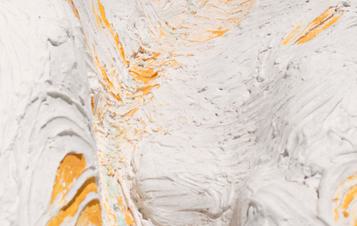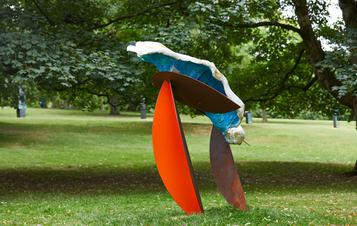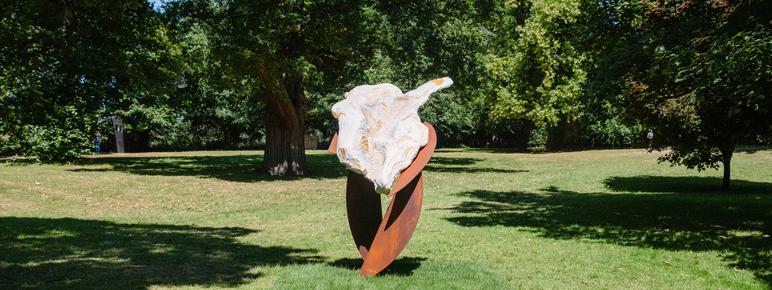
Ro Robertson: Stone (Butch)
Art Outdoors /Ro Robertson: Stone (Butch)
Ro Robertson’s Stone (Butch) (2021) is part of a body of works exploring the terrain of the queer body in the landscape and was created by plaster casting directly in crevices in natural rock formations at Godrevy Point (St Ives Bay, Cornwall).
The shape of the sculpture resembles a body in movement, while the textures evoke rocks and swirling water. Robertson sees natural rock formations as queer forms and changing bodies. Stones are shaped by the process of erosion, which reveals new shapes and layers over time.
The phrase ‘stone butch’ is taken from the lesbian and transgender activist Leslie Feinberg’s novel Stone Butch Blues (1993). The book describes the oppression of lesbian, transgender, butch and femme identities. Feinburg wrote about the ‘raincoat layer’ of the body exposed to external and hostile forces.
This layer is visualised in Stone (Butch) as a
protective cover made of jesmonite shielding the
Corten steel below. The sculpture reclaims a space
in the landscape for queer and butch identities,
which have historically been deemed ‘against
nature’. Stone (Butch) prompts us to question
who is depicted and commemorated in art. Public
statues and figurative sculptures have traditionally
represented a narrow demographic and a binary
understanding of gender.
Robertson’s work resonates with the landscape and artistic heritage of YSP, particularly with Barbara Hepworth’s The Family of Man (1970) nearby. While they were an Associate Artist during Yorkshire Sculpture International in 2019, Robertson had a solo display at The Hepworth Wakefield and took part in the group exhibition Associated Matter at YSP. Their works are in the collections of the Sainsbury Centre for Visual Arts and The Hepworth Wakefield.
Stone (Butch) is the first major open-air sculpture by an artist already recognised an important voice of their generation. First shown in an urban context as part of Sculpture in the City in London, the work now resonates with the natural landscape environment at YSP and begins a dialogue with new audiences.
The journey of making Stone (Butch), my first public sculpture, is one of freedom and an investigation of my body and its connection to the natural landscape on my own terms and by extension a reclamation of space from a history of queerness being deemed ‘against nature’. Giving form to a negative space within the crack of a rock connects metaphorically with the gaps in our LGBTQIA+ experience and history which has disrupted how we connect with ourselves and others. To experience this work in the open air at Yorkshire Sculpture Park as part of the permanent collection I hope will bring connection by giving physicality to this void which takes its place within the history and figures of British sculpture.
- Ro Robertson
Stone (Butch) was acquired into the YSP permanent collection in 2022. Presented by Magnus Rausing, courtesy Maximillian William, London. Produced in collaboration with Pangaea Sculptors’ Centre
You might also like
More- News

Major new public sculptures unveiled in Wakefield city centre
20 July 2023 - Art Outdoors
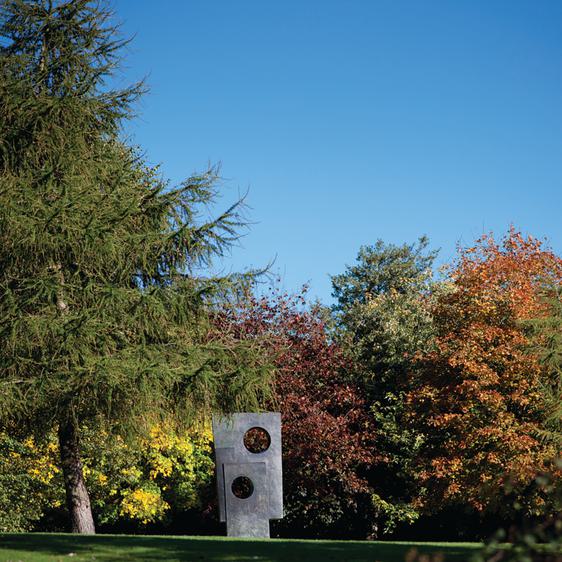
Barbara Hepworth: Squares with Two Circles
Squares with Two Circles is a large bronze work by Barbara Hepworth. The sculpture stands on the Hillside at YSP near to Hepworth's The Family of Man. The two circular apertures provide 'windows' to the landscape beyond. - News
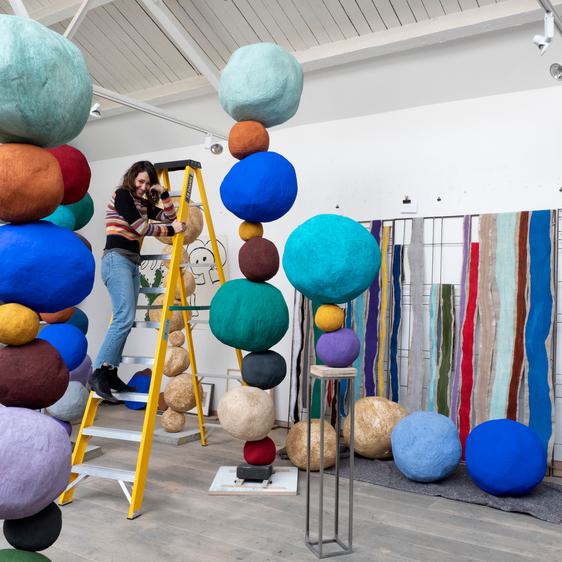
Major new public sculptures announced for Wakefield city centre
24 November 2022 - Art Outdoors

Niki de Saint Phalle: Buddha
Niki de Saint Phalle began creating figurative works in the mid-1960s. In response to the pressures of domestic life as daughter, mother and wife, she created her iconic Nana figures. The colourful and voluptuous sculptural works are celebrations of the female form. These goddess-like figures continued as a form of expression throughout the artist’s life, and paralleled modern feminist efforts to reconsider and revalue the female body.
